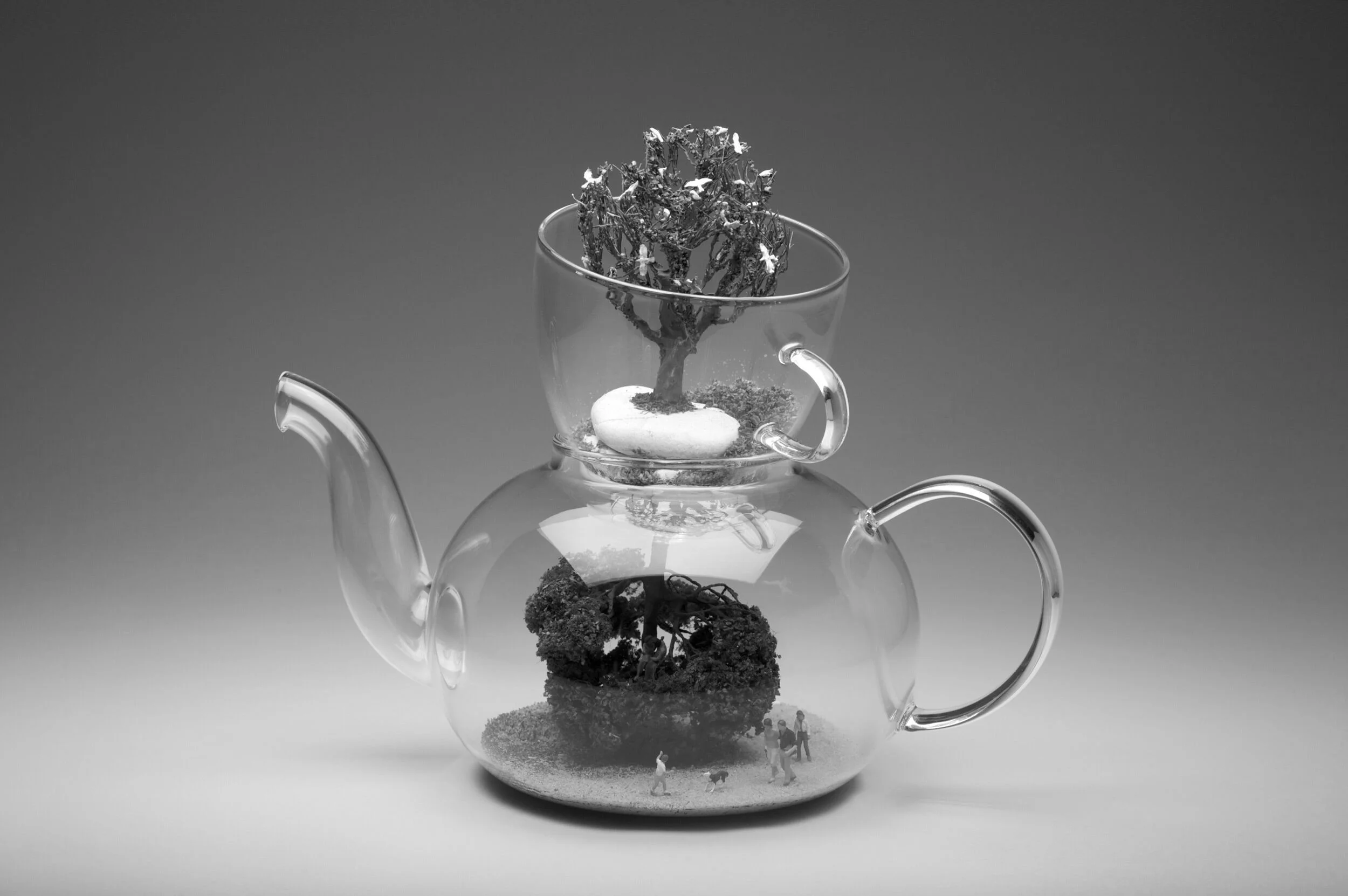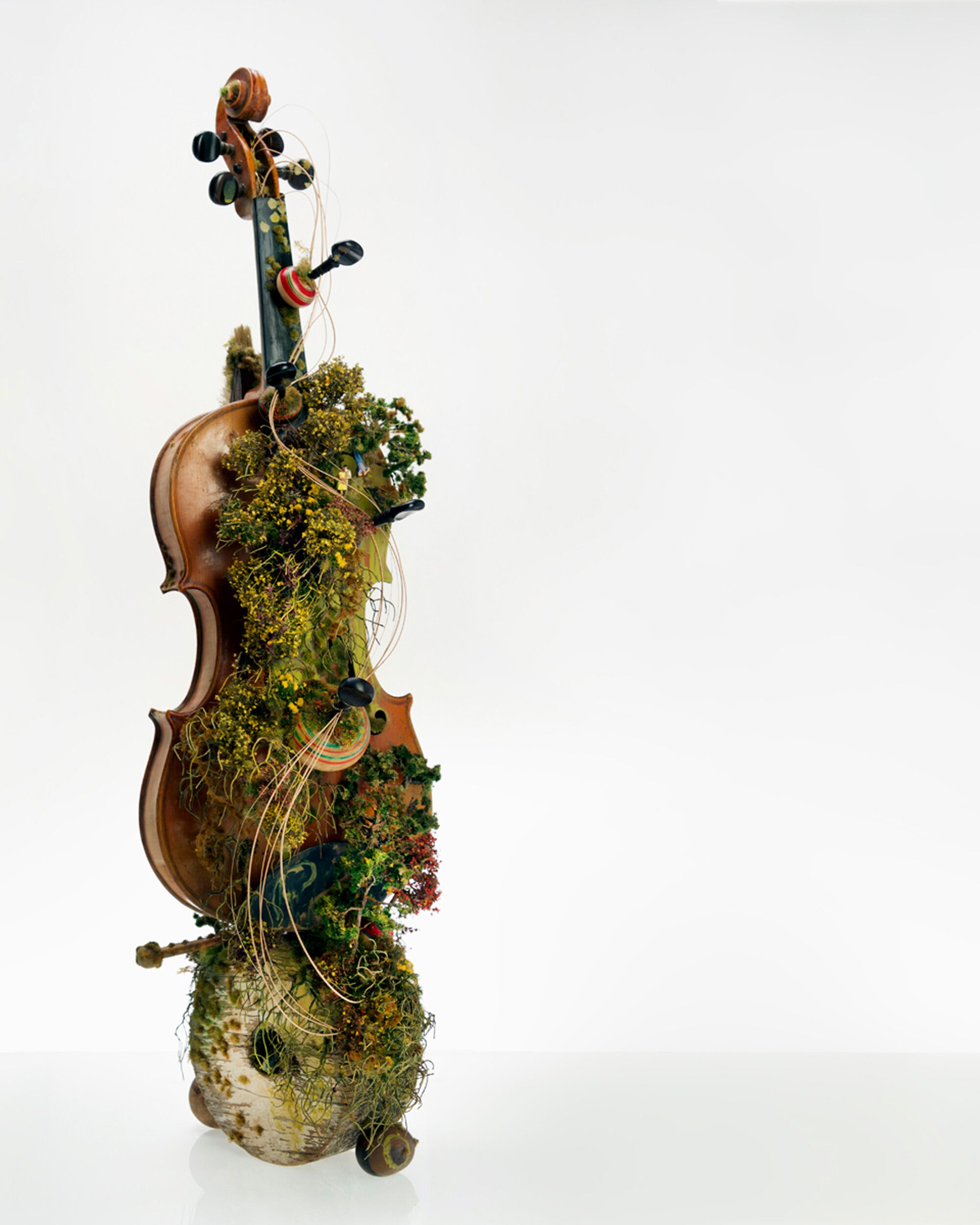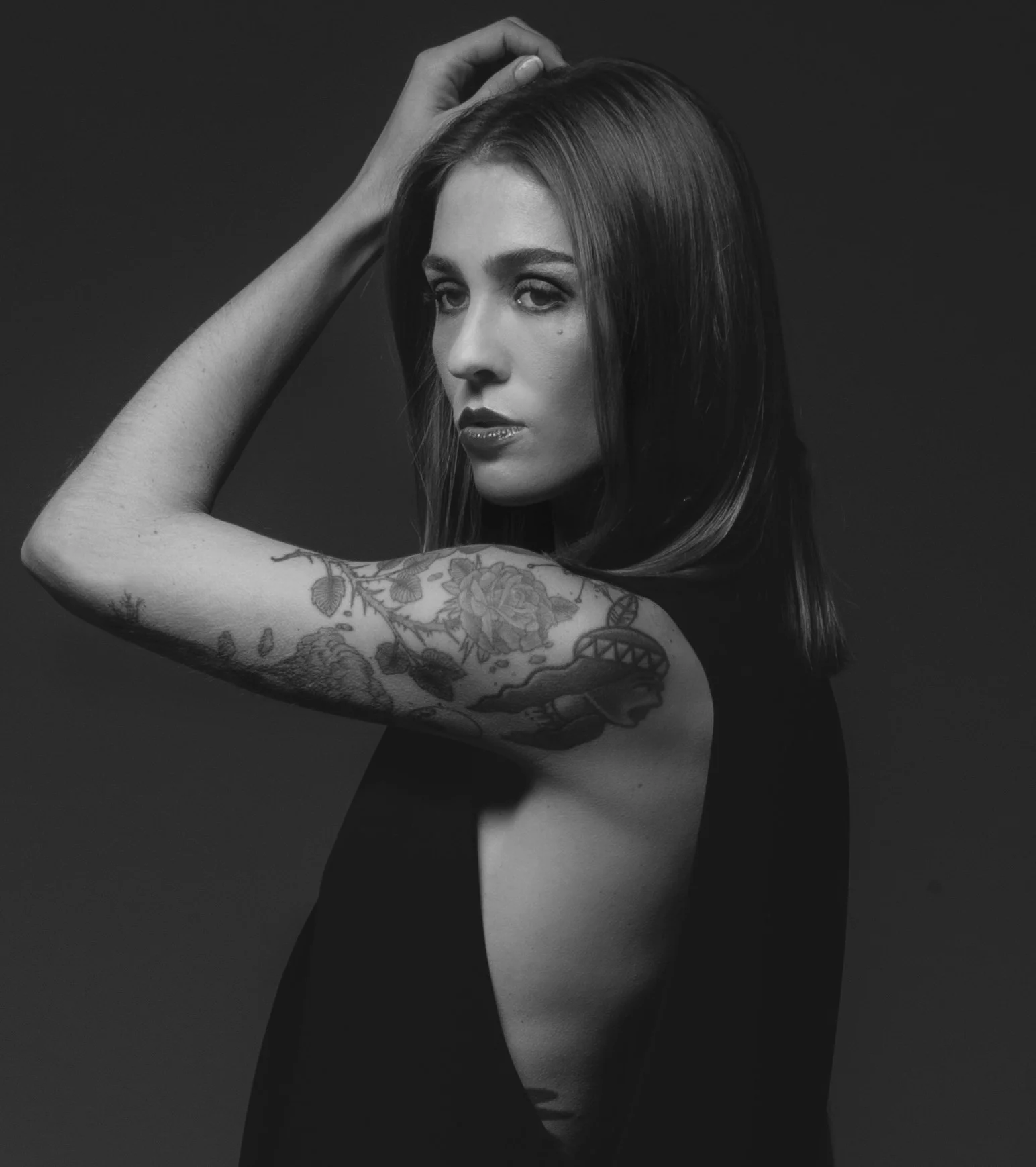KENDAL MURRAY
“Earthward, Skyward, Homeward,” mixed media assemblage, 21cm x 26cm x 16 cm
Kendal Murray is a Sydney-based artist who creates whimsical miniature pieces. Much of her work resembles combinations of dioramas and terrariums. In this interview, she talks about the psychological research which initially motivated her to assemble on a smaller scale, why she likes to build pieces around everyday objects, and the unique challenges of creating miniature artworks.
Interview by Tyler Nesler
What initially inspired you to create works in miniature? Have you always been interested in this form, or is it a more recent creative focus?
My work with miniatures began about twelve years ago, as a response to research I was conducting into the way fantasy informs selfhood. I began using the miniature as a metaphor for interiority, creating dream-like figurative scenarios, into which the viewer is invited to project and imagine themselves in an assortment of roles.
It follows my interest in psychological experiences and the different ways those experiences are embodied and given meaning. My work looks at these issues through a variety of concepts that range from topical and provocative, to reflective of a collective social experience; articulated through suitable sculptural materials and techniques.
In many ways your miniature creations are a mix of terrariums and dioramas. What is a distinct appeal of these forms for you?
The forms of the terrarium and diorama offer a structural transition from reality to fantasy. They offer me the opportunity to create different contexts in which the tiny characters can enact a range of narratives. The settings influence the interpretation of the character’s physical experiences, actions and the implied emotions, which give meaning to the narrative.
I’ve also created sculpture that combines terrarium with diorama structures, to create an opportunity for a more complex narrative and viewing experience. This union allows for a change in scale within the artwork to create multiple narratives, which can be explored separately and in conjunction with each other. In my exhibitions “The Collector” and “Show and Tell,” I used a combination of terrarium and diorama within the artworks, to speak about the link between imagination and substitution, and the roles of memory and fantasy in a collector's desire to create a narrative identity for them self. In this context, they could also be seen to perform like time capsules as they take the viewer from the present to the past, in the way they work to prompt memories.
Many of your miniature sculptures are constructed around objects such as coin purses, compact mirrors, glass teapots, and books. What attracts you to everyday objects like these as the basis for your creations?
I’ve used those everyday objects as they can be held in your hand, communicating the miniature scale of the artworks, as well as prompting a very personal engagement with the characters and their narrative. I enjoy using everyday objects within the miniature work. The evidence of wear and tear and patinas on their surface suggest their history as a usable item, while adding a certain personality to the narratives shared through the artwork.
“Backyard Chase, Race, Apace,” mixed media assemblage, 11cm x 11cm x 12cm
“Community, Opportunity,” mixed media assemblage, 21cm x 23cm x 15.5cm
With their lush green grass and trees and little on-the-go figurines in parks and beaches with trailers and cameras, there is an almost Edenic, old-fashioned travel postcard aesthetic to much of your miniature work. Do old postcards and family vacation snapshots serve as an inspiration?
A couple of the scenes are linked to personal memories. Trips to the beach and the Blue Mountains in Australia, and the pride displayed, through the depiction of a parent with their camera taking photos of the family.
The lushness of the garden and landscape scenes have been used to suggest relaxation, peace and happiness. Experiences linked to holidays and weekend leisure with our family and friends that hold a special meaning.
The scenes of familiar and recognizable relationships, along with old fashioned cars, caravans and cameras, locate the miniature scenes as memory. The combination of the flourishing landscapes and found objects from another time, offer a stage like device for the miniature families and friends, which refreshes personal memories, prompting an experience of reminiscence in the viewer.
There is a whimsical feel to much of your work, with a sense of playful narrative built into the placement and actions of the various figurines. When you are constructing a piece, do you work with any kind of particular story in mind, with the sense of a sort of an unwritten narrative caption to the scene?
I work in a playful way when I’m creating the narrative, experimenting with different character groupings and looking for combinations of drama and humor in various scenarios. I play with surprise or symbolic elements within the story line to draw attention to a point of contemplation, an emotional experience or to pose a question.
The titles of the artworks utilize rhyme as a way of representing the echoing experience of emotive memory through dream fantasy, represented in the miniature. They add to the whimsical experience of the work, and offer a caption and key to the meaning for the narrative on display.
Where do you most often procure your people and animal figurines and the other little props and materials you use for your pieces? Or do you make many of them yourself?
I use a mixture of purchased elements, found every-day objects and modelling materials to create my miniature artworks. The figures and animals are model railway figurines that I paint and deploy to fit the narratives I am creating. Timber forms combined with model making landscape supplies are re-imagined in various combinations, reworked and manipulated. The books and boxes in the diorama sculptures I make myself.
“Breakfast Time, Just in Time,” mixed media assemblage using purse, 11cm x 13cm x 13cm
“Event Ascent, Intent Descent,” Mixed media assemblage, 9cm x 36cm x 23cm
“Frontier Unclear, Souvenir, Disappear,” mixed media assemblage, 21.5cm x 34.5cm x 29cm
“Afterglow, Adagio,” mixed media assemblage, 76cm x 23cmx 27.5cm
What is your construction process for these works? What sorts of tools do you use, and what are some particular logistical challenges with working on such a small scale?
I create the artworks using a combination of 3D collage and model making processes. The construction methods vary with each style of miniature work. Sometimes I do sketches to work out the composition, but I also work in a spontaneous way that I would describe as an experimental combining of elements. This includes the scenarios for the tiny characters and the assemblages of objects that often make up the structures of the sculptural compositions. It’s a layered working process, so I need to work out how elements fit together and the sequence in which they should be made and assembled.
There are many challenges in making miniature artworks. It’s a style of work that requires isolation, as even the movement created by someone walking around the work space can generate disruptive vibrations within the work and my hands as they attempt to bring tiny elements together. I regularly find myself holding my breath as I try to glue two tiny items together using tweezers. I have often lost miniature elements as they escape from the tight squeeze of the tweezers and jump beyond the work space before I’m able to glue them in place. I once found a miniature horse that I thought I had lost, hanging on the arm of my glasses. It was only discovered after catching sight of myself in a mirror. There is also the inevitable coating of my fingers with glue and landscaping materials.
The tools I use include tweezers, a selection of utility knives, pliers, wire cutters, paint brushes and a range of paints, modeling clays and resins, sewing tools, a variety of drills and attachments, sandpaper and a variety of glues. Most importantly, I use magnifying glasses!
What is coming up in the near future for you? Any new works or shows that you would like people to know about?
New miniature work will be exhibited in an exhibition Reflections of a Fading Sky in June this year at Arthouse Gallery in Sydney. I’m also working on a few new projects for exhibition in the future. I’m developing doll-based sculptures that I began with the artwork “Blue Bird, Overheard” and another project that explores the concept of the memory palace.
View more of Kendal’s work on her site.
All artwork photos by Ian Hobbs
You might also like our interviews with these artists:
Tyler Nesler is a New York City-based freelance writer and the Founder and Managing Editor of INTERLOCUTOR Magazine.













